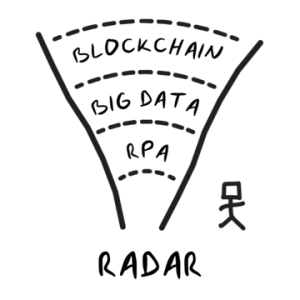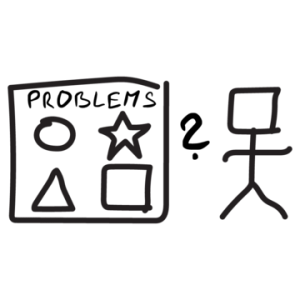In this article, we summarize the top 10 mistakes that can be made when enterprises build a bot, as well as cognitive agents, digital assistants or chatbots. These faults were identified while building and discussing Brian—the AI-based digital assistant for business professionals. Nevertheless, no matter how important these faults can be, we still believe that the biggest fail is to underestimate the potential of bots—an arising digital workforce.
Mistake #1: Underestimating the Potential

The biggest mistake is to underestimate the potential and relevance of bots—not having them on your digital radar. Bots are increasingly smart, instantly available, extremely flexible and provide a very convincing business case. The business case is not attractive just in financial terms, but also in terms of acceleration, consistency and user insights. Gartner predicts that by 2020, more than 85% of customer interactions will be managed without a human. Bots are a powerful interface for humans to access multiple services or pieces of information.
Mistake #2: Unrealistic Expectations

On the other side, there is belief in a general artificial intelligence—a bot which knows everything. We have to keep it real, even the most advanced bots apply narrow AI—one that covers a defined area. Siri and Alexa are trained to understand thousands of ‘intents’ but you probably already identified their limitations too. Brian will perform 50 selected high-value tasks—translating files, providing financial benchmarks, etc. Most bots have one specific purpose: price negotiation for commodity products, FAQ management or providing order delivery status. There are thousands of use cases. The broadest and ‘most intelligent’ bot is probably Mitsuku—a serial winner of the Loebner prize in artificial intelligence. You can talk to her in order to get an idea where the technology stands. She is amazing but there is still a long way to go. There is nothing like the artificial general intelligence (so far)!
Mistake #3: Thinking All Bots Are the Same

There are stupid bots and there are smart bots. There are hundred thousands of bots out there, most of them (ca. 80%) on Facebook Messenger. Why Facbook Messenger? Because it is by far the largest messenging platform in the world (with more than 1.2 billion users) and there is a very easy way to deploy them.
Most bots are stupid—they are by no means ‘intelligent’. This kind of bots are built on platforms such as Chatfuel or ManyChat and guide you through a conversation by offering you questions and answers you can select from. Nevertheless, for many use cases, this stupid bots are perfectly fine. The smart bots use advanced natural language understanding algorythms like Lex (Amazon), Luis (Microsoft), Watson (IBM), Dialogflow (Google) or Rasa. With these platforms you can build truly intelligent digital workforce!
Mistake #4: Wrong Use Case

You should not start from the technology you want to use, but from the real problem you want to solve. What criteria should be met when considering bots? Too often the use case fails the SAFE-check:
Scalability: You need a process with a large number of customer or employee interactions.
Audience: Your target group needs to be open and willing to interact with a digital counterpart.
Focus: You have to select a very narrow, clearly defined use case.
Efficiency: The effect of your bot needs to be positive—in terms of speed, consistency, insight, and cost. Define your use case wisely, especially if it is your first one!
Mistake #5: Wrong Technology Platform

There is a large number of existing platforms allowing you to build your bot, partly in minutes! Some experts already speak about bot-AI as a commodity. A closer look reveals that there are significant differences between the platforms. They differ in functionality, security, convenience, stability, and cost. An unwise selection of a platform leads to frustration, as well as loss of time and money. Probably the worst idea is to start working on your own bot platform. At AskBrian, we tested four different platforms and discovered that the differences are huge. Again, the selection depends on your use case, capabilities of your team, and channels you want to use.
Mistake #6: Wrong Interaction Channel

Talking to digital assistants like Siri, Alexa or Cortana is convenient, but there are still too many misunderstandings in the transformation from speech to text. We also tested calling Brian from a regular phone—for some use cases it works, for many not. Calling a digital person by phone is an exciting experience and as the technology advances (e.g., Google Duplex) it will become a huge disruptor for customer service. We believe that one has to focus more on communication channels their audience already uses and try to avoid the current speech-to-text problems. Since Brian targets the corporate world, it is email for now, Skype for business, and Slack will follow.
Mistake #7: Underestimating the Share of ‘Bot-Virgins’

What is a bot? For many users, it will be the first time they communicate with a bot. The users don’t know how to communicate with the assistant/bot, they do not know what to expect. Especially in the first months and maybe years, you have to consider this and do some missionary work. Bots are not evil, also not all-knowing… the right expectations and honest communication when you build a bot are the key.
Mistake #8: ‘Let the IT Do It’

Building bots is not an IT issue. It is much more about shaping the use case, training the bot, designing the conversation flow, and generating the content to be provided. After designing the technical architecture of the bot, there are very clear handover points between the business domain owners and the IT backend developers. Still, the business domain owners need a basic understanding of what happens in the code and the backend developers need to understand the business. Both sides can learn a lot and the team typically has a very steep learning curve and very much fun too!
Mistake #9: ‘Let the Swarm Do It’

When talking to professionals in large corporations we often see a frustration from previous attempts to build a bot. There have been often 20 – 30 decentral projects, usually leading to disappointing results. The reason for this may be in all the faults described above. But there is also an organizational perspective. There are not many professionals able to push such bot projects forward. The decentral swarm approach with various technical platforms, no sharing of code libraries and approaches doesn’t allow to leverage the internal and external know-how—the scarce talent is wasted. Establishing bot expert networks is crucial.
Mistake #10: Building the Perfect Bot


